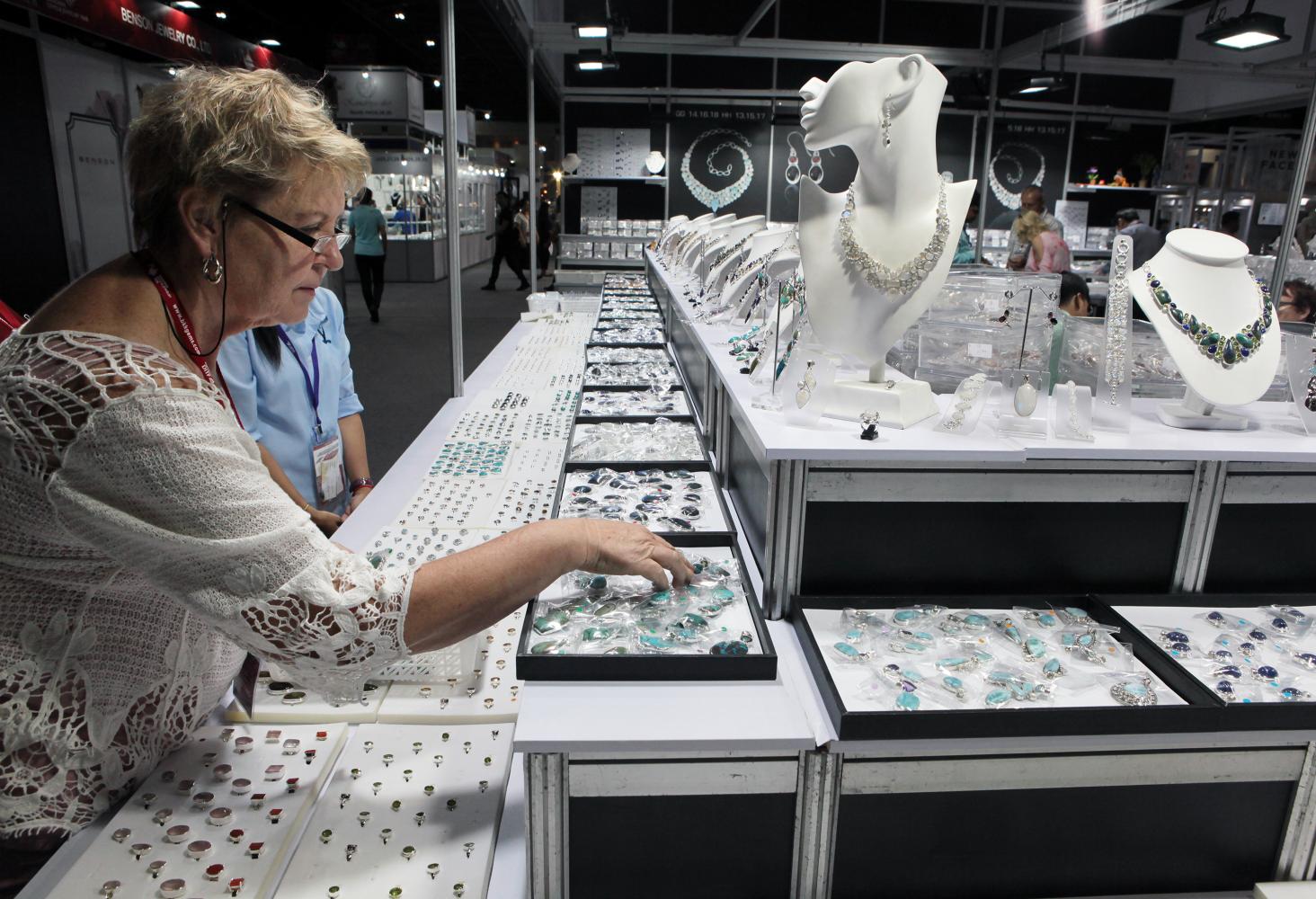
The government is being urged to provide financial support of at least 50 billion baht to the gems and jewellery industry, which has been hit hard by the coronavirus outbreak, to enable producers stay in business and retain skilled labour.
Duangkamol Jiambutr, director of the Gem and Jewelry Institute of Thailand (GIT), said local manufacturers face a lack of liquidity because most allocated cash to buy raw material stocks such as precious stones.
"The pandemic has taken a heavy toll on the gems and jewellery industry in many countries, especially in major markets like China, Hong Kong, Europe and the US," Mrs Duangkamol said. "Worldwide lockdown measures have resulted in the closure of many retail jewellery shops, while a sharp drop in international tourists seriously hit the industry's revenue."
She said large manufacturers are likely to maintain their business until the end of this year, but small operators can last only one or two months longer without help.
"Easing liquidity in particular will help retain skilled labour in the gems and jewellery industry," Mrs Duangkamol said. "Keeping skilled workers on is crucial, as most of them are from the northern and northeastern part of Thailand and are unlikely to keep using their skills once they leave to go back home to work in the farm sector or other careers."
The GIT recently held discussions with representatives from the Thai Bankers' Association and the gems and jewellery industry to request cooperation from banks on soft loans to increase firms' liquidity in exchange for retaining workers during the crisis.
Many entrepreneurs have applied for soft loans, but their requests were turned down by banks, which reasoned that gems and jewellery are luxury products and come with high risk during an economic slowdown.
Financial institutions are not willing to make loans to the industry, even with the law allowing operators to put up precious stones as collateral, Mrs Duangkamol said.
Banks have said evaluating the prices of precious stones is enormously difficult because there are no reference prices available in the market.
"Overall gem and jewellery exports generate as much as 1 trillion baht a year," Mrs Duangkamol said. "The government needs to pay more heed to this industry, at least to let them catch their breath and retain skilled workers by offering them soft loans worth 50 billion baht."
According to Mrs Duangkamol, Thailand's gems and jewellery sector has been suffering as a result of the pandemic, with exports highly likely to contract this year.
The contraction's pace will depend on how far the pandemic spreads and for how long, she said.
Before the outbreak, the GIT forecast shipment growth of 3% this year.
Gem and jewellery exports make up the third-largest export category by value, trailing automotive and parts and computers and parts.
The industry employs more than 700,000 workers.
Last year, gems and jewellery exports including gold topped US$15.7 billion, up 30.3% from the previous year. In baht terms, export value amounted to 486 billion baht, up 26.6% from the previous year.
Excluding volatile gold, shipments fetched $8.09 billion, up 6.3% on 2018, while in baht terms the total was 251 billion, up 2.7%. Key export markets included Asean, India, the Middle East and Hong Kong.
